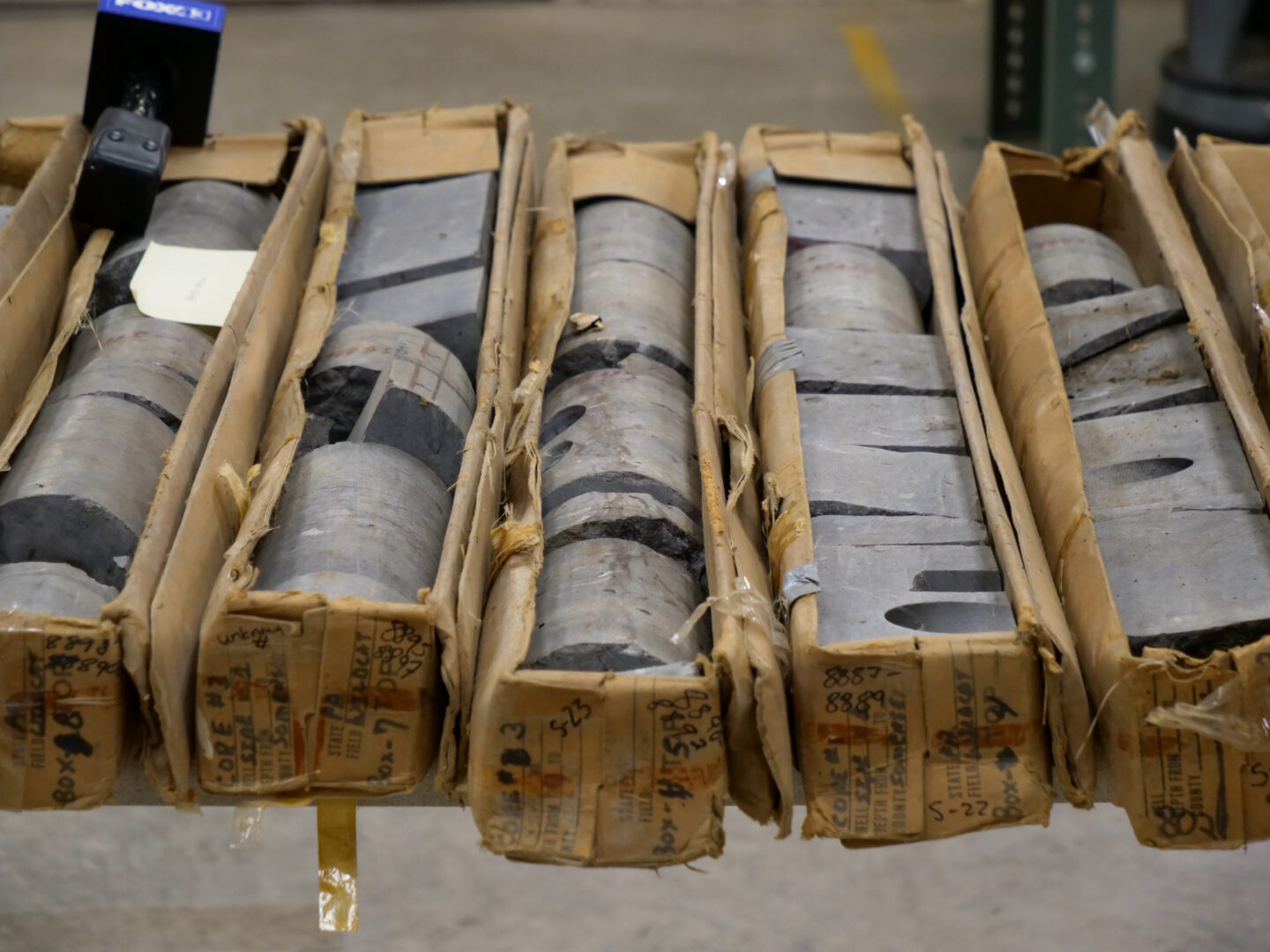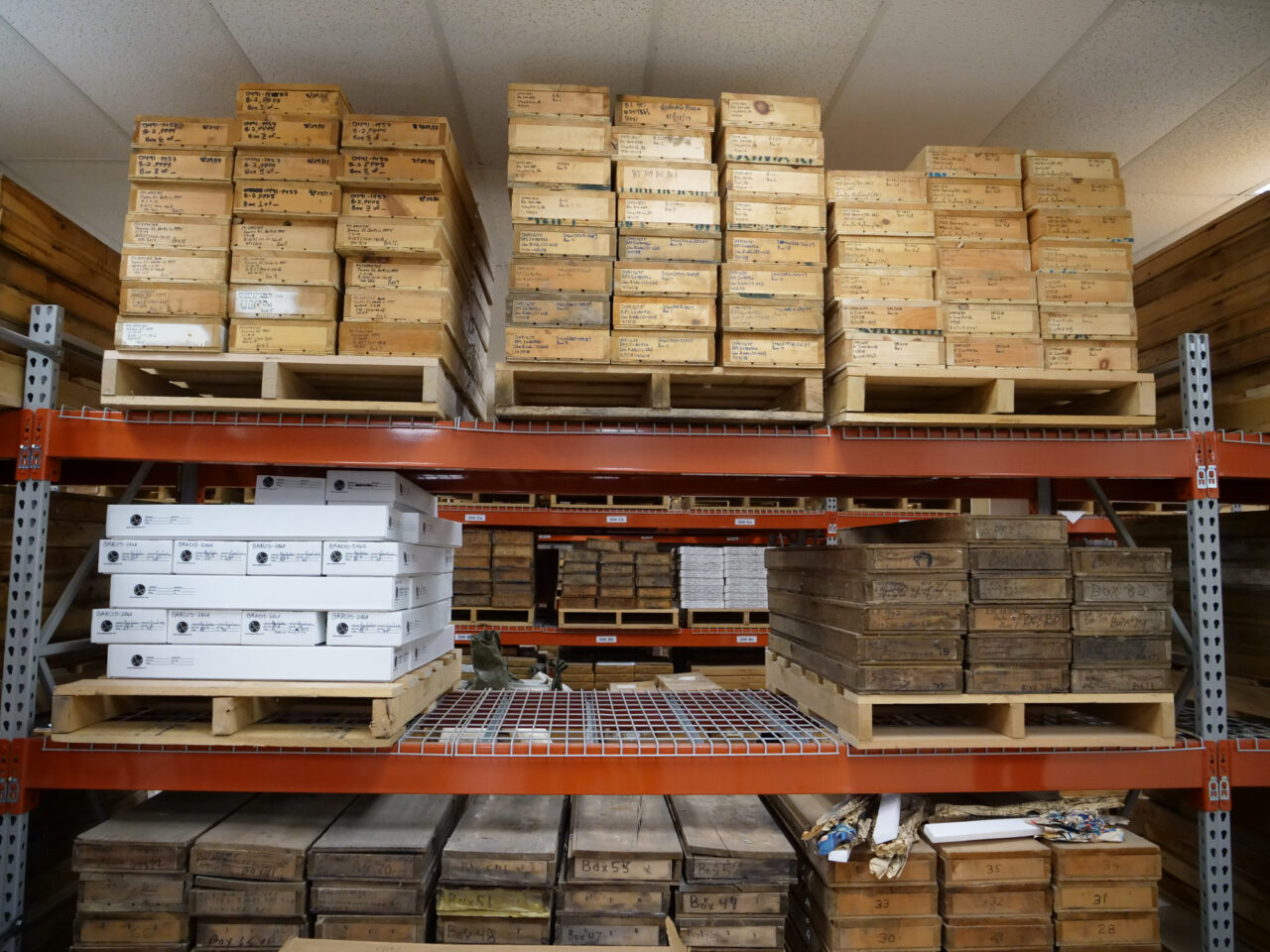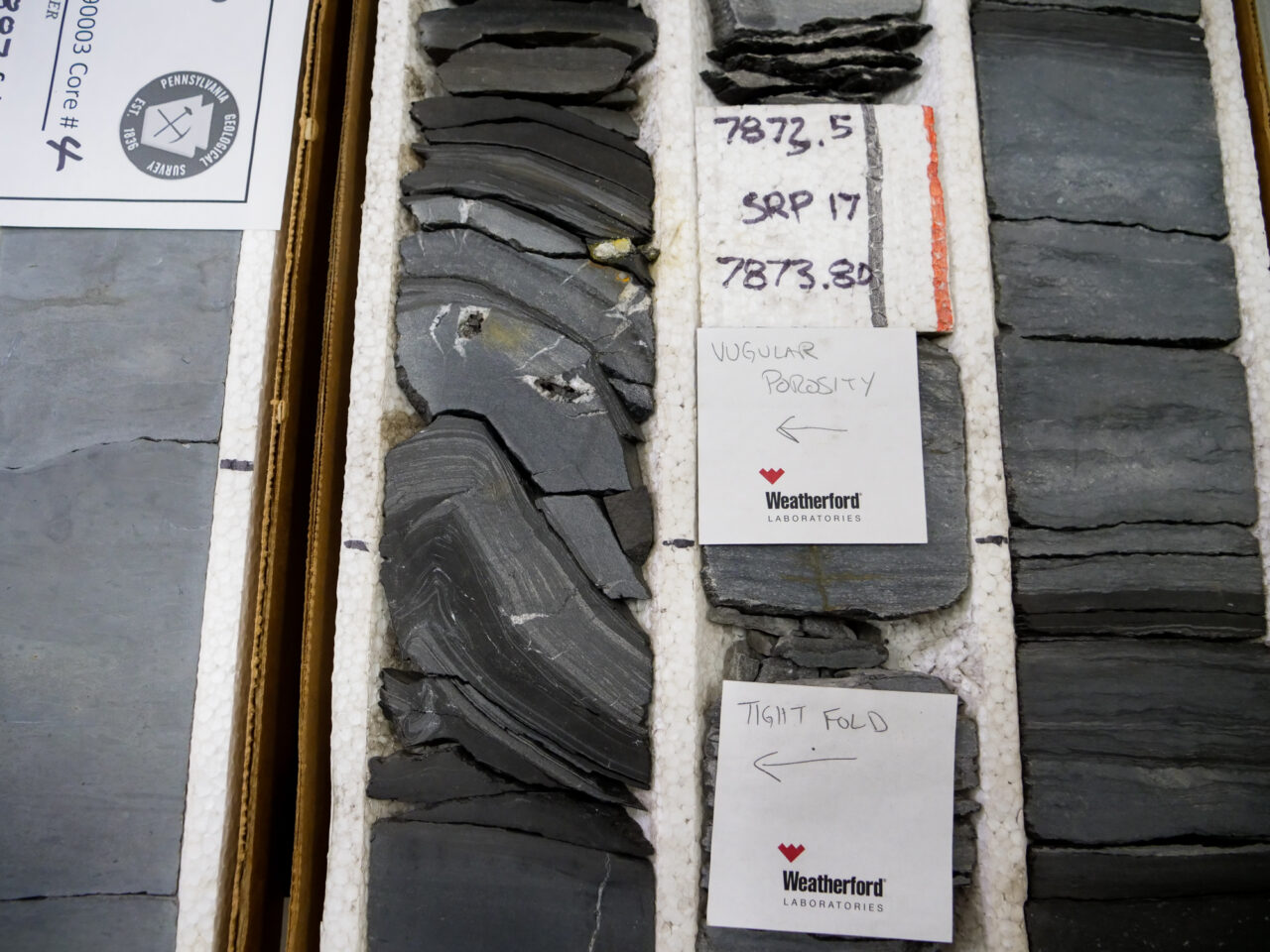
Core samples at the Pennsylvania Geological Survey on Nov. 15, 2022.
Jeremy Long / WITF


Core samples at the Pennsylvania Geological Survey on Nov. 15, 2022.
Jeremy Long / WITF

Jeremy Long / WITF
Core samples at the Pennsylvania Geological Survey on Nov. 15, 2022.
Pennsylvania is trying to position itself as a potential hub for carbon capture and storage, a technology that has been billed as a way to eliminate greenhouse gas emissions from fossil fuel use.
The Pennsylvania Geological Survey got $6 million in this year’s budget for a new building to house its growing library of core samples. The samples are big cylinders of rock taken from deep underground, usually by fossil fuel companies looking for the best place to drill or mine.
Right now, boxes of core samples from the last century are stacked floor to ceiling in the basement of the Survey’s headquarters in Middletown.

Jeremy Long / WITF
Boxes of core samples in storage at the Pennsylvania Geological Survey on Nov. 15, 2022.
State Geologist Gale Blackmer said the new building will give greater access to people who want to study the cores.
“The conditions for viewing and maybe doing some on-the-spot analyzing is not really ideal here,” Blackmer said.
The site of the new building hasn’t been chosen.
The core samples have a lot of value for researchers now looking for the best places to inject carbon dioxide, so it can’t reach the atmosphere.
But carbon capture technology has so far been very expensive, and untested at the scale needed to avoid dangerous warming.
Geologists estimate rock formations in western and northern Pennsylvania could store billions of metric tons of CO2.
But Assistant State Geologist Kris Carter said there will be limitations, such as cost and access.
“Not every place that may have storage or prospective storage beneath it is necessarily going to be used for that because there might be competing uses or land use management constraints above ground,” she said.
Carter said companies will also need to consider pressure constraints in the rock and whether any old gas wells in the area could compromise storage.

Jeremy Long / WITF
Marcellus Shale core samples from Greene County at the Pennsylvania Geological Survey on Nov. 15, 2022.
Gov. Tom Wolf recently approved $1 billion in new tax credits meant to make the state more attractive to companies making “clean hydrogen.”
Hydrogen has been touted as a fuel that could help clean up emissions from hard-to-decarbonize sectors like airlines. When burned, hydrogen’s only byproduct is water.
But how clean hydrogen is depends on how it’s made. It’s considered “green” if it’s made using renewable energy.
Companies planning to make hydrogen from natural gas would need to find a way to capture and store the resulting carbon dioxide for the hydrogen to be considered clean.
StateImpact Pennsylvania is a collaboration among WITF, WHYY, and the Allegheny Front. Reporters Reid Frazier, Rachel McDevitt and Susan Phillips cover the commonwealth’s energy economy. Read their reports on this site, and hear them on public radio stations across Pennsylvania.
(listed by story count)
StateImpact Pennsylvania is a collaboration among WITF, WHYY, and the Allegheny Front. Reporters Reid Frazier, Rachel McDevitt and Susan Phillips cover the commonwealth’s energy economy. Read their reports on this site, and hear them on public radio stations across Pennsylvania.
Climate Solutions, a collaboration of news organizations, educational institutions and a theater company, uses engagement, education and storytelling to help central Pennsylvanians toward climate change literacy, resilience and adaptation. Our work will amplify how people are finding solutions to the challenges presented by a warming world.